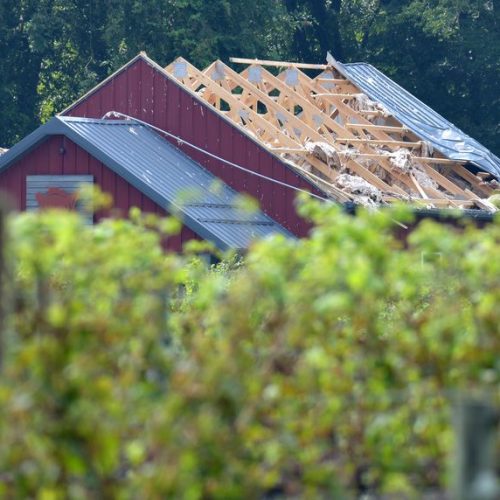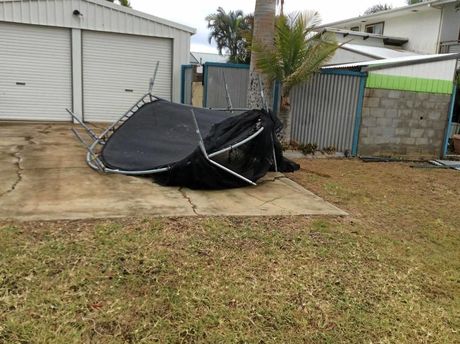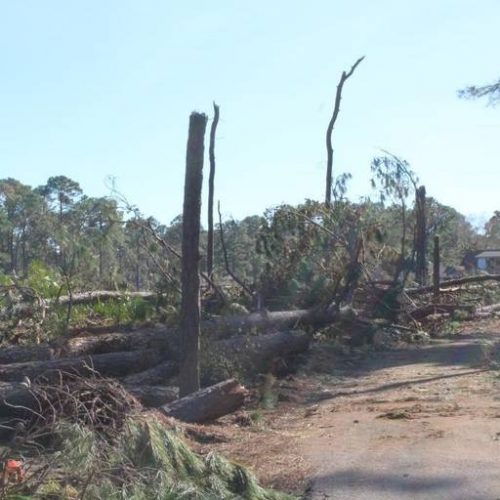If you’ve ever watched The Wizard of Oz or Twister, you probably know that there’s perhaps no place on earth more associated with tornadoes than the Central Plains.
But in 2020, the so-called “tornado alley” saw a historic low tornado count.
North Carolina saw more than double the tornadoes that Kansas saw in 2020 – a highly unusual occurrence. Consider this: In 2020, Mississippi saw more than double the tornadoes that Kansas and Oklahoma saw combined.
Based on the Storm Prediction Center’s (SPC) preliminary count, 58 tornadoes touched down in both Oklahoma and Kansas in 2020. That might sound like a lot, but consider the fact that those states average a combined 158 tornadoes each year.
Explaining The Plains Tornado Drought
It’s obviously not common for states like Florida, North Carolina or even Minnesota, South Carolina and Illinois to see more tornadoes than Kansas or Oklahoma.
This abnormality likely owed to a series of spring troughs, or elongated areas of low pressure, anchored across the Eastern U.S. during most of April, May and June.
That limited the amount of warm, humid air to stream up from the Gulf of Mexico and produce severe weather across the Plains. Heat and humidity produce instability, one of the necessary ingredients for the production of tornadoes.
“Toward the end of April the atmospheric pattern favored the development of strong eastern United States troughs. What’s important about this is that this kind of pattern results in northerly winds across the central United States that limits the ability of the warm, moist air from the Gulf of Mexico to surge inland into the central United States,” said Dr. Patrick Marsh, the Chief of Science Support for the Science Support Branch and the Storm Prediction Center.
“The end result is that the central United States never had an extended period of time where we had all four primary ingredients for severe thunderstorms and tornadoes in place for any extended length of time,” Dr. Marsh said.
Because states like Kansas and Oklahoma are on the border between the much drier western half of the U.S. and the much more humid eastern half of the country, they rely on southerly air flow from the Gulf of Mexico to supply humidity.
And without that humidity, you don’t get the big storms you need to produce tornadoes.
It wasn’t a year completely devoid by tornadoes by any standard – and far from it. Over a thousand tornadoes touched down in the U.S. in 2020, according to a preliminary count from the Storm Prediction Center (SPC).
But they just didn’t happen in the Central Plains.
But, 2020 Was Still a Very Deadly Year for Tornadoes
Unfortunately, tornado deaths, the most impactful tornado metric, proved the worst in years. Seventy-eight Americans lost their lives in tornadoes in 2020, the highest annual U.S. tornado death toll since the historic 2011 season, when 553 people died in tornadoes.
That’s largely thanks to a series of early spring tornado outbreaks across the more densely populated Southeast, specifically the middle Tennessee overnight tornadoes in early March and the Easter Sunday severe weather outbreak in April.
These tornadoes took place in so-called Dixie Alley, where overnight tornadoes are more common than the Central Plains and there are more big population centers, like Nashville.
Dixie Alley stretches from southeast Texas through Arkansas, Louisiana, Mississippi, Tennessee, Alabama and east into Georgia and northern Florida.
Any Lessons for 2021?
History said there’s little we can glean from the 2020 tornado drought and what it might mean for 2021’s spring tornado season.
“One year’s tornado season carries little weight with how the following year will play out,” Dr. Marsh said. “Case in point, 2011 was one of the most active tornado years in recent history. This was followed by 2012, which was one of the least active tornado years.”
“More recently, 2019 was a very active tornado year in the Plains, whereas 2020 was not. They real key is what happens to the overall atmospheric pattern during the months of late April into mid-June.”
If you look back at the previous five years of tornadoes in both Kansas and Oklahoma, it also appears that there isn’t any sort of noticeable trend towards fewer tornadoes.
Between 2015-2019, Kansas averaged 105 tornadoes per year, while Oklahoma averaged 70. Both those statistics are slightly above each state’s annual average, perhaps another indication that 2020 was a one-off.
In other words, it was likely a series of shorter-term weather patterns that led to the 2020 tornado drought across the Plains. Only time will tell if there’ll be another similar lack of tornadoes in states like Kansas and Oklahoma in 2021.
by Chris Bianchi (2021, Jan 22) Spectrum News 1




